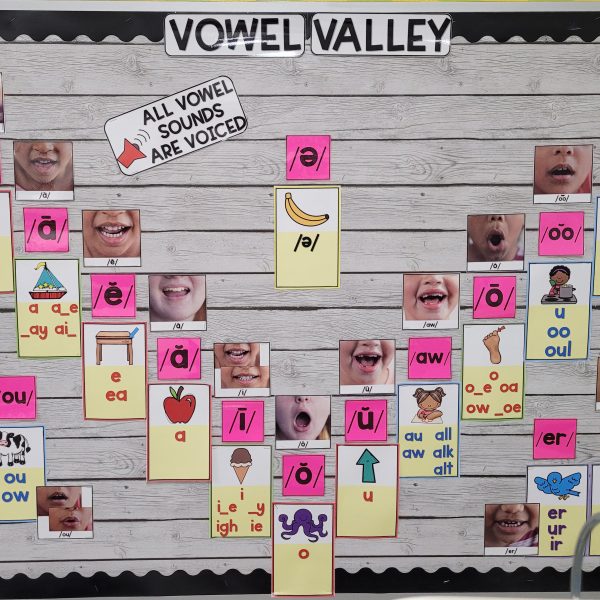As teachers, we are always learning and looking for ways to refine our practice so we can better serve our students. Recently, we have been following a body of research referred to as the “Science of Reading” to help us better understand how children learn to read.
The Science of Reading includes five crucial components: phonemic awareness, phonics, vocabulary, fluency and comprehension. Each of these help students to develop strong reading skills.
In Kindergarten, we participate daily in phonemic awareness instruction. In just 8 to 10 minutes your child will orally practice blending, segmenting, isolating and manipulating words, syllables, onset-rime and/or phonemes in an explicit and systematic approach. We use a program called Heggerty for this time.
Our Phonics program, Guided Phonics and Beyond, by Tara West, allows us to work in whole and small groups to differentiate the needs of the students in the classroom. “It follows a systematic scope and sequence that embeds both explicitly taught phonics-based words as well as irregular high-frequency words”, (Tara West, Guided Phonics and Beyond) known as “heart words”.
In the past, we believed that if a student simply saw a word enough times, they’d learn it. We taught our students their sight words (words we wanted them to read automatically, accurately, and effortlessly) through rote memorization. If you have older children, you may recall word lists that we sent home for them to study and memorize, and/or flashcards we asked you to drill them with.
This method did work for some students; however, it didn’t work for all. There have been many students who struggle to remember new words, even after many exposures. The science of reading is now helping us understand why.
Using a process called “orthographic mapping”, students permanently store words for retrieval. Students are taught to first say a word, tap the sounds in the word, map the word, and finally identify the letters that make each of these sounds. For this mental process to take place, students need direct instruction on how to connect sounds to the written word. In this way, we integrate high-frequency sight words into our phonics lessons using the Heart Word Method.
We will look into this more in next week’s blog post.
Information above has been found within the Science of Reading. Credit is given to both Malia Hollowell of Playdough to Plato (Reading Roadmap) and Tara West of Little Minds at Work (Guided Phonics and Beyond Curriculum) for their online training and educational resources.


